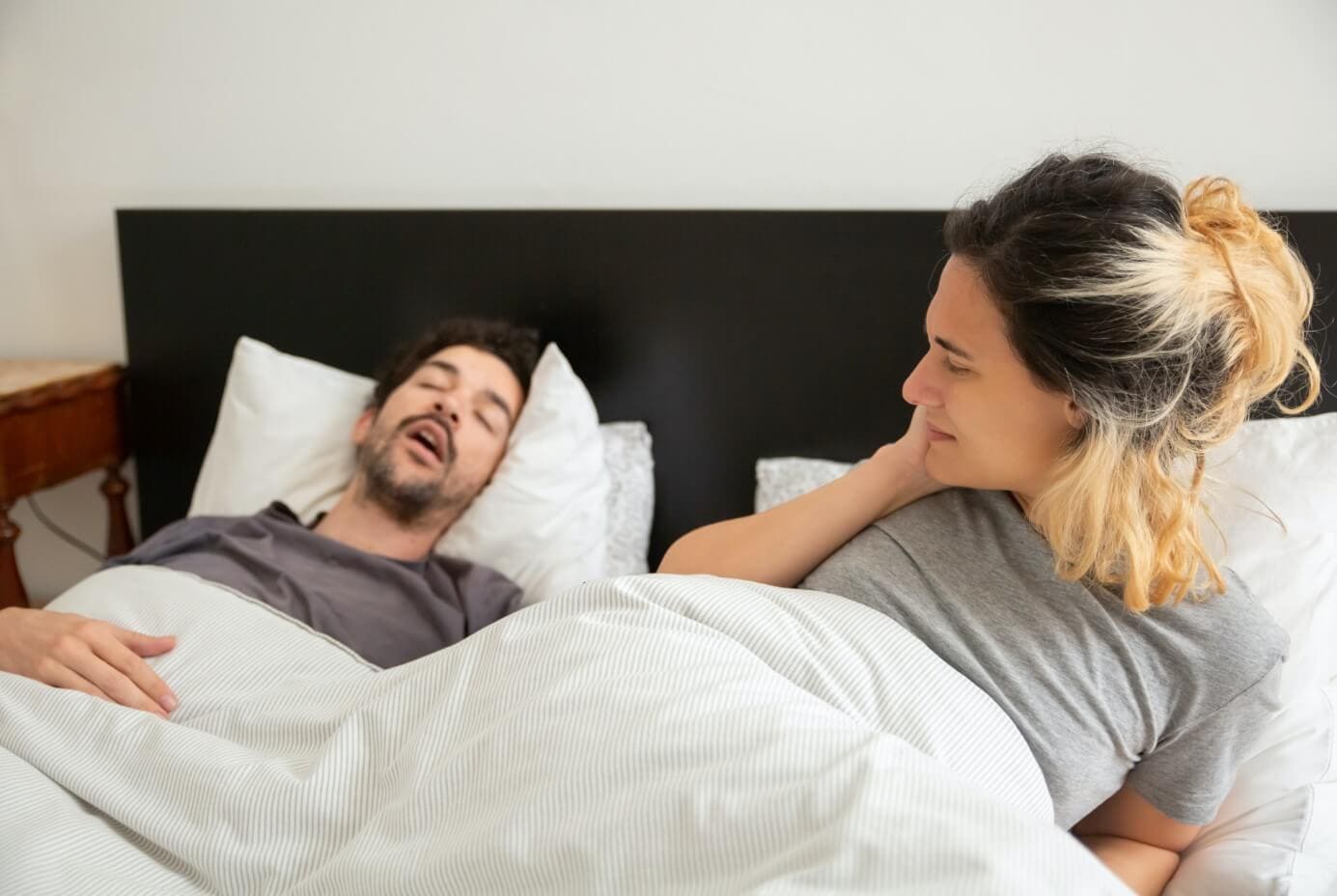According to a survey conducted by the Australian Sleep Health Foundation, 40% of the respondents stated being troubled by their partners snoring. Almost 95% of persons with snoring problems also resort to using anti-snoring devices.
Snoring may result in adverse health issues such as daytime sleepiness and being at a higher risk of heart disease. Snoring is sometimes also a symptom of an underlying condition called sleep apnoea. The main options of treatment or management of snoring include mandibular advancement devices and, when these don’t work, surgery.
What causes snoring?
Sound waves are nothing but the vibration that travels through the medium of air. When a person snores, the sound is generated by the tissues within the throat. The airway muscles relax during sleep, and this causes vibration within the oral orifice.
The anatomy of your mouth, i.e., the shape and size of organs such as nostrils, tongue, throat, etc contribute to the intensity and type of sound created.
How to choose a suitable anti-snoring device?
The first step towards choosing the suitable device to fix your snoring issue is to find the root cause of snoring directly. It is essential to find out the reason for the snoring problem – whether it is caused by small and tight nostrils, or by congestion, or if the throat anatomy causes it.
Though these can be self-diagnosed, it is better to take the advice of a healthcare professional. Anti-snoring devices work to keep the muscles in your upper throat (the airway passage) in the optimal place, thus avoiding the vibrations and consequently snoring.
Types of Anti-Snoring Devices –
The main categories of devices used and their method of working is given below.

1. Mandibular Advancement Devices
These devices include mouthpieces and mouth guards. They are custom-made to fit inside the jaw and are worn when one sleeps. The device helps to move the jaw forward and thereby create a significant airway passage within the throat.
It, in turn, reduces the vibration of upper airway tissue and thereby avoids snoring. It also results in better breathing.
It is best suited for people whose snoring is rooted in the anatomy of their throat. They are also known to benefit persons with the problem of sleep apnoea as well.
Another benefit is that it prevents teeth grinding during sleep. Like any other external device fit within the body, it takes a few times of wearing to get used to.
2. Tongue Stabilising Devices
These look similar to the pacifiers used with babies. The plastic device is placed on your lips and consists of a hollow protrusion (like a pacifier) where the tongue is inserted. It helps bring the tongue forward during sleep, preventing it from blocking the airway.
However, it presupposes that the user has a tongue that is longer or reaches up to the teeth. It also requires being soaked in hot water before use.
3. Nasal strips or plugs
Nasal strips are small strips that resemble band-aids and stuck over the nostrils, while nasal plugs are similar to earplugs. Both of these work by expanding the nostrils and hence aid in comfortable breathing.
However, it is to be noted that this works only for people who snore as a result of tight nostrils and not suitable for people whose snoring is from the throat. Nasal strips are also typically for one-time use and hence may be costly in the long run.
Other devices also include chin-up bands and pillows, which seek to work on the same principle of moving the jaw forward to enable easier breathing and broader airway passage, but these may not be as effective as mouth guards.
